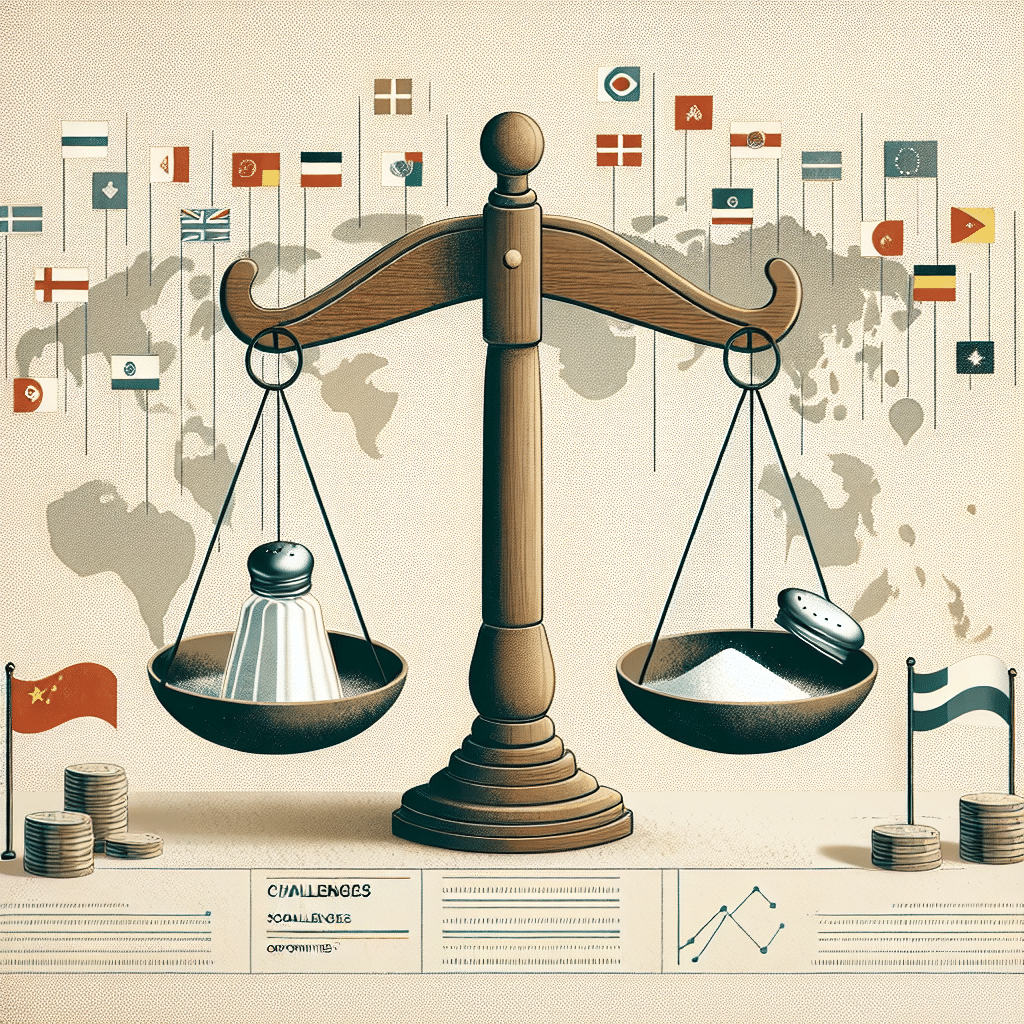WHO’s New Global Sodium Reduction Benchmarks Bring Challenges and Opportunities
-
Table of Contents
- WHO’s New Sodium Reduction Benchmarks: Challenges and Opportunities Ahead
- Understanding the Need for Sodium Reduction
- The WHO’s Sodium Reduction Benchmarks
- Challenges Presented by the New Benchmarks
- For the Food Industry
- For Public Health and Policy Makers
- For Consumers
- Opportunities Arising from Sodium Reduction Efforts
- Innovation in the Food Industry
- Public Health Benefits
- Consumer Awareness and Education
- Case Studies and Statistics
- Conclusion: Balancing the Scales of Sodium Reduction
- ETChem’s Protein Products: A Complementary Approach to Health
WHO’s New Sodium Reduction Benchmarks: Challenges and Opportunities Ahead
The World Health Organization (WHO) has recently set forth new global benchmarks for sodium reduction, aiming to combat the rising health concerns associated with high sodium intake. These benchmarks present both challenges and opportunities for public health, the food industry, and consumers worldwide. This article delves into the implications of these new guidelines, exploring the potential impact on health outcomes, industry practices, and consumer behavior.
Understanding the Need for Sodium Reduction
Excessive sodium consumption is a significant risk factor for hypertension, heart disease, and stroke, which are among the leading causes of death globally. The WHO’s guidelines are a response to this public health crisis, with the goal of reducing sodium intake to recommended levels to improve cardiovascular health and save lives.
- Current sodium intake far exceeds the recommended limit of less than 2 grams per day.
- Processed and packaged foods are the primary sources of excess sodium in diets worldwide.
- Reducing sodium intake could prevent millions of premature deaths each year.
The WHO’s Sodium Reduction Benchmarks
The WHO’s new benchmarks target a wide range of food categories, encouraging manufacturers to reformulate products to contain less sodium. These categories include bread, savory snacks, meat products, and convenience foods, among others. The benchmarks are voluntary but serve as a powerful tool to guide industry practices and inform policy-making.
- The benchmarks are set at a level that is achievable and can have a significant impact on public health.
- They are intended to create a level playing field for food manufacturers globally.
- The benchmarks are part of a broader strategy to reduce non-communicable diseases.
Challenges Presented by the New Benchmarks
While the WHO’s benchmarks are a step in the right direction, they present several challenges for various stakeholders.
For the Food Industry
Food manufacturers face the technical challenge of reducing sodium without compromising taste, texture, and shelf life. Additionally, there are economic considerations, as reformulation can be costly and may affect competitiveness if not adopted industry-wide.
For Public Health and Policy Makers
Public health officials and policy makers must find effective ways to encourage or mandate compliance with the benchmarks. They also face the challenge of educating consumers about the importance of reducing sodium intake.
For Consumers
Consumers may resist changes in taste profiles of their favorite products and may lack awareness about the health risks associated with high sodium intake.
Opportunities Arising from Sodium Reduction Efforts
Despite the challenges, the WHO’s benchmarks also present numerous opportunities.
Innovation in the Food Industry
Food manufacturers have the opportunity to lead the market by innovating healthier products that meet the new benchmarks. This can result in a competitive advantage and potentially open up new market segments.
Public Health Benefits
Reducing sodium intake at the population level can lead to significant improvements in public health, with fewer cases of hypertension and cardiovascular diseases.
Consumer Awareness and Education
The benchmarks can serve as a catalyst for consumer education campaigns, increasing awareness about the importance of a low-sodium diet and how to make healthier food choices.
Case Studies and Statistics
Several countries have already implemented sodium reduction initiatives with promising results. For example, the United Kingdom’s voluntary salt reduction program has led to a significant decrease in average salt consumption. In Finland, a long-term strategy including labeling and consumer education has been successful in reducing sodium intake and improving public health outcomes.
- UK’s average salt intake fell by 15% between 2003 and 2011.
- Finland saw a 75% decrease in deaths from stroke and coronary heart disease between 1972 and 2002.
Conclusion: Balancing the Scales of Sodium Reduction
The WHO’s new global sodium reduction benchmarks are a critical step towards improving global health. While they present challenges, such as reformulation costs and consumer acceptance, they also offer opportunities for innovation and public health gains. It is essential for all stakeholders to work collaboratively to overcome these challenges and seize the opportunities to create a healthier future.
ETChem’s Protein Products: A Complementary Approach to Health
In the context of sodium reduction and overall health improvement, protein intake is another important aspect of a balanced diet. ETChem’s protein products can play a vital role in this regard. Their high-quality collagen products, including marine, fish, bovine, and chicken collagen, offer a range of health benefits and can be incorporated into various dietary supplements and food products.
ETChem’s commitment to quality and their extensive product range make them an excellent partner for businesses looking to enhance their offerings with protein-rich solutions. Their expertise in the industry ensures that their clients receive products that meet the highest standards of safety and efficacy.
About ETChem:
ETChem, a reputable Chinese Collagen factory manufacturer and supplier, is renowned for producing, stocking, exporting, and delivering the highest quality collagens. They include marine collagen, fish collagen, bovine collagen, chicken collagen, type I collagen, type II collagen and type III collagen etc. Their offerings, characterized by a neutral taste, instant solubility attributes, cater to a diverse range of industries. They serve nutraceutical, pharmaceutical, cosmeceutical, veterinary, as well as food and beverage finished product distributors, traders, and manufacturers across Europe, USA, Canada, Australia, Thailand, Japan, Korea, Brazil, and Chile, among others.
ETChem specialization includes exporting and delivering tailor-made collagen powder and finished collagen nutritional supplements. Their extensive product range covers sectors like Food and Beverage, Sports Nutrition, Weight Management, Dietary Supplements, Health and Wellness Products, ensuring comprehensive solutions to meet all your protein needs.
As a trusted company by leading global food and beverage brands and Fortune 500 companies, ETChem reinforces China’s reputation in the global arena. For more information or to sample their products, please contact them and email karen(at)et-chem.com today.





